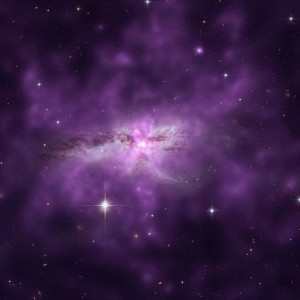
- Podcast Features
-
Monetization
-
Ads Marketplace
Join Ads Marketplace to earn through podcast sponsorships.
-
PodAds
Manage your ads with dynamic ad insertion capability.
-
Apple Podcasts Subscriptions Integration
Monetize with Apple Podcasts Subscriptions via Podbean.
-
Live Streaming
Earn rewards and recurring income from Fan Club membership.
-
Ads Marketplace
- Podbean App
-
Help and Support
-
Help Center
Get the answers and support you need.
-
Podbean Academy
Resources and guides to launch, grow, and monetize podcast.
-
Podbean Blog
Stay updated with the latest podcasting tips and trends.
-
What’s New
Check out our newest and recently released features!
-
Podcasting Smarter
Podcast interviews, best practices, and helpful tips.
-
Help Center
-
Popular Topics
-
How to Start a Podcast
The step-by-step guide to start your own podcast.
-
How to Start a Live Podcast
Create the best live podcast and engage your audience.
-
How to Monetize a Podcast
Tips on making the decision to monetize your podcast.
-
How to Promote Your Podcast
The best ways to get more eyes and ears on your podcast.
-
Podcast Advertising 101
Everything you need to know about podcast advertising.
-
Mobile Podcast Recording Guide
The ultimate guide to recording a podcast on your phone.
-
How to Use Group Recording
Steps to set up and use group recording in the Podbean app.
-
How to Start a Podcast
-
Podcasting
- Podcast Features
-
Monetization
-
Ads Marketplace
Join Ads Marketplace to earn through podcast sponsorships.
-
PodAds
Manage your ads with dynamic ad insertion capability.
-
Apple Podcasts Subscriptions Integration
Monetize with Apple Podcasts Subscriptions via Podbean.
-
Live Streaming
Earn rewards and recurring income from Fan Club membership.
-
Ads Marketplace
- Podbean App
- Advertisers
- Enterprise
- Pricing
-
Resources
-
Help and Support
-
Help Center
Get the answers and support you need.
-
Podbean Academy
Resources and guides to launch, grow, and monetize podcast.
-
Podbean Blog
Stay updated with the latest podcasting tips and trends.
-
What’s New
Check out our newest and recently released features!
-
Podcasting Smarter
Podcast interviews, best practices, and helpful tips.
-
Help Center
-
Popular Topics
-
How to Start a Podcast
The step-by-step guide to start your own podcast.
-
How to Start a Live Podcast
Create the best live podcast and engage your audience.
-
How to Monetize a Podcast
Tips on making the decision to monetize your podcast.
-
How to Promote Your Podcast
The best ways to get more eyes and ears on your podcast.
-
Podcast Advertising 101
Everything you need to know about podcast advertising.
-
Mobile Podcast Recording Guide
The ultimate guide to recording a podcast on your phone.
-
How to Use Group Recording
Steps to set up and use group recording in the Podbean app.
-
How to Start a Podcast
-
Help and Support
- Discover

“Saint Thomas, who was as simple as he was wise,” wrote Jacques Maritain, “defined the beautiful as that which, being seen, pleases: id quod visum placet. These four words say all that is necessary: a vision, that is to say, an intuitive knowledge, and a delight.”
At this summer’s Wyoming School of Catholic Thought, we began by looking at the Medieval cosmos. It is a beautiful vision that, alas, turns out not to be true. Then we looked at the modern vision—the vision of scientism—in which the universe is nothing but a randomly constituted result of elementary particles bumping into each other. It is a universe without goodness, beauty, or truth—save the truth (maybe) of mathematics and physics.
Yet the topic of our week together was, “Beauty is Truth: Science and the Catholic Imagination.”
After we reduced the Medieval cosmos to “fermions and bosons,” Dr. Jeremy Holmes began putting the world back together arguing that beauty is a necessary part of the scientific endeavor. His lecture was over an hour long, but will, I think, be well worth your time and concentration. Hearing it again brought great delight so, using Thomas' definition, it can be called a beautiful lecture.
More Episodes
 2023-11-21
2023-11-21
 339
339
 2023-11-14
2023-11-14
 351
351
 2023-11-07
2023-11-07
 413
413
 2023-10-31
2023-10-31
 898
898
 2023-10-24
2023-10-24
 363
363
 2023-10-17
2023-10-17
 339
339
 2023-10-10
2023-10-10
 404
404
 2023-10-03
2023-10-03
 479
479
 2023-07-18
2023-07-18
 436
436
Create your
podcast in
minutes
- Full-featured podcast site
- Unlimited storage and bandwidth
- Comprehensive podcast stats
- Distribute to Apple Podcasts, Spotify, and more
- Make money with your podcast
It is Free
- Privacy Policy
- Cookie Policy
- Terms of Use
- Consent Preferences
- Copyright © 2015-2025 Podbean.com




